
How to Use ESP32: Examples, Pinouts, and Specs
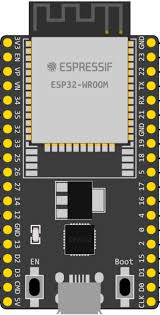
 Design with ESP32 in Cirkit Designer
Design with ESP32 in Cirkit DesignerIntroduction
The ESP32, manufactured by ESP32, is a low-cost, low-power system on a chip (SoC) designed for a wide range of applications. It features integrated Wi-Fi and Bluetooth capabilities, making it an ideal choice for Internet of Things (IoT) projects, smart devices, and embedded systems. The ESP32 is highly versatile, offering dual-core processing, a rich set of peripherals, and extensive support for programming environments like Arduino, MicroPython, and ESP-IDF.
Explore Projects Built with ESP32
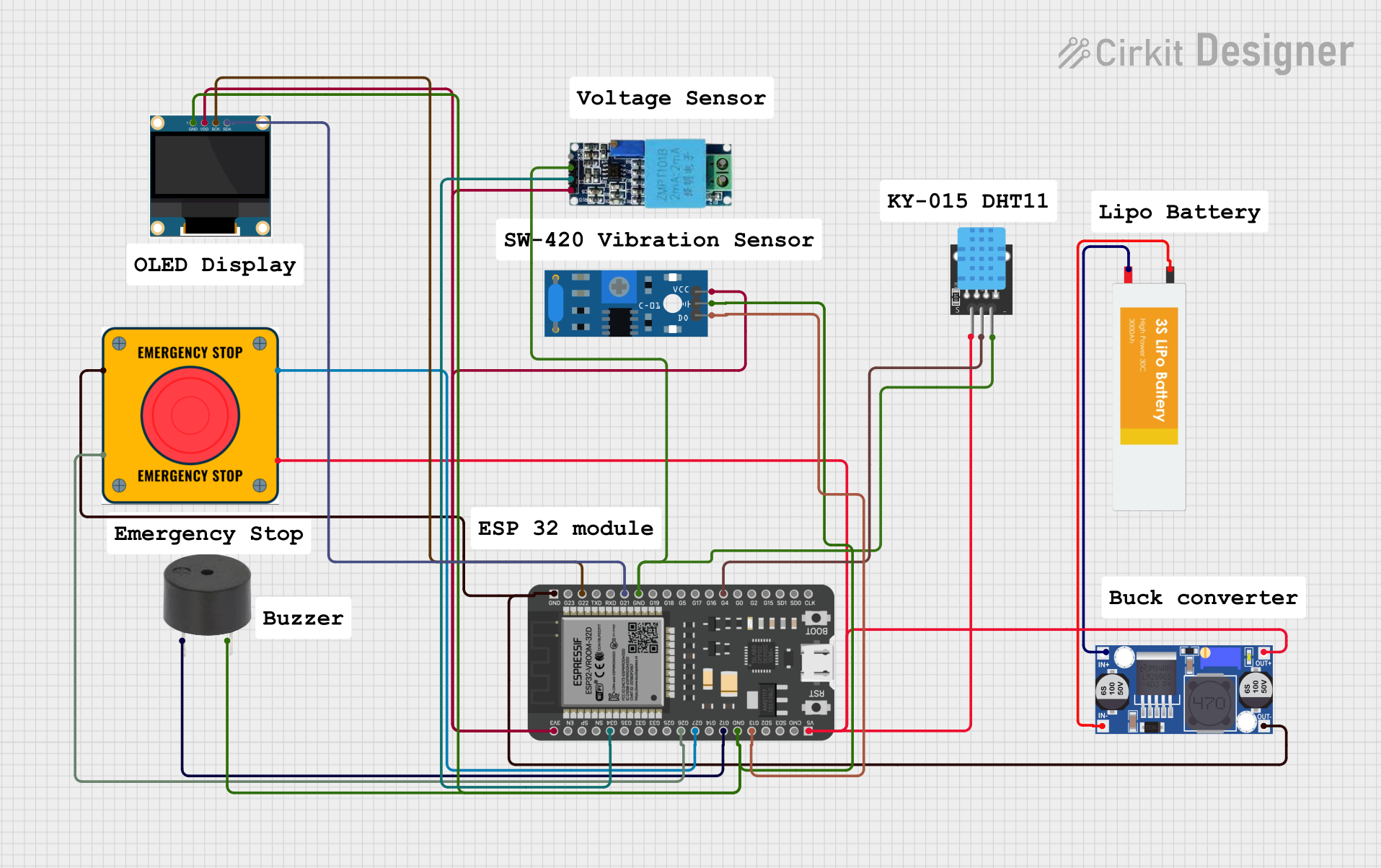
 Open Project in Cirkit Designer
Open Project in Cirkit Designer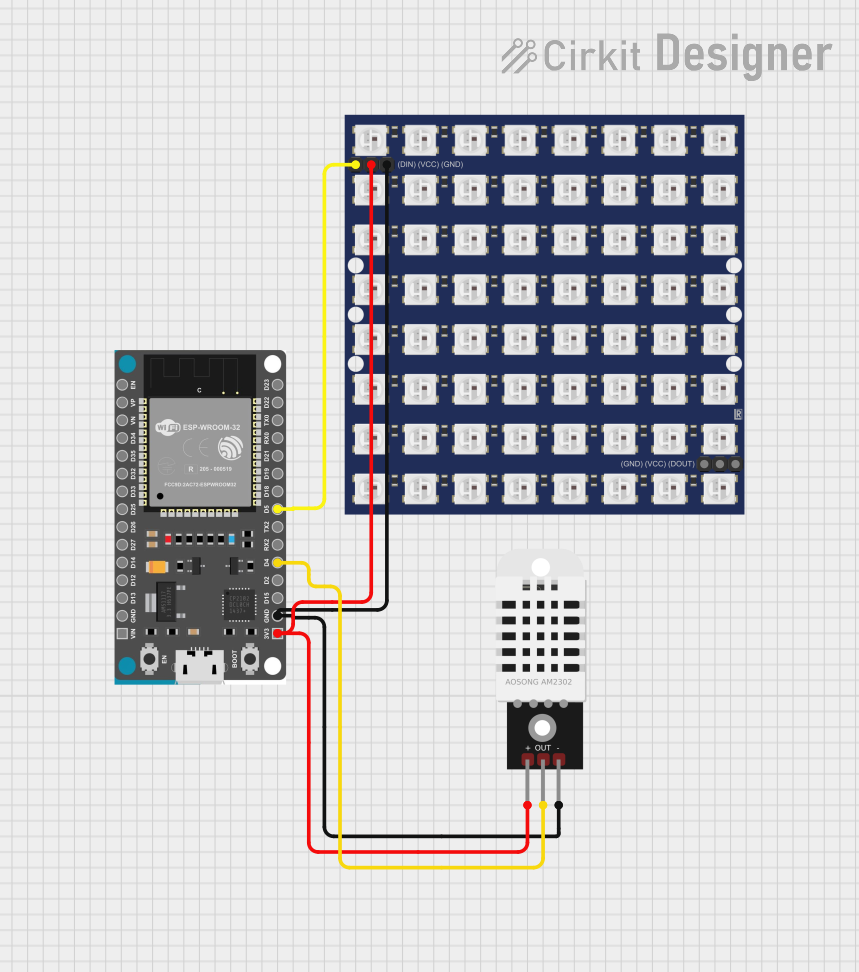
 Open Project in Cirkit Designer
Open Project in Cirkit Designer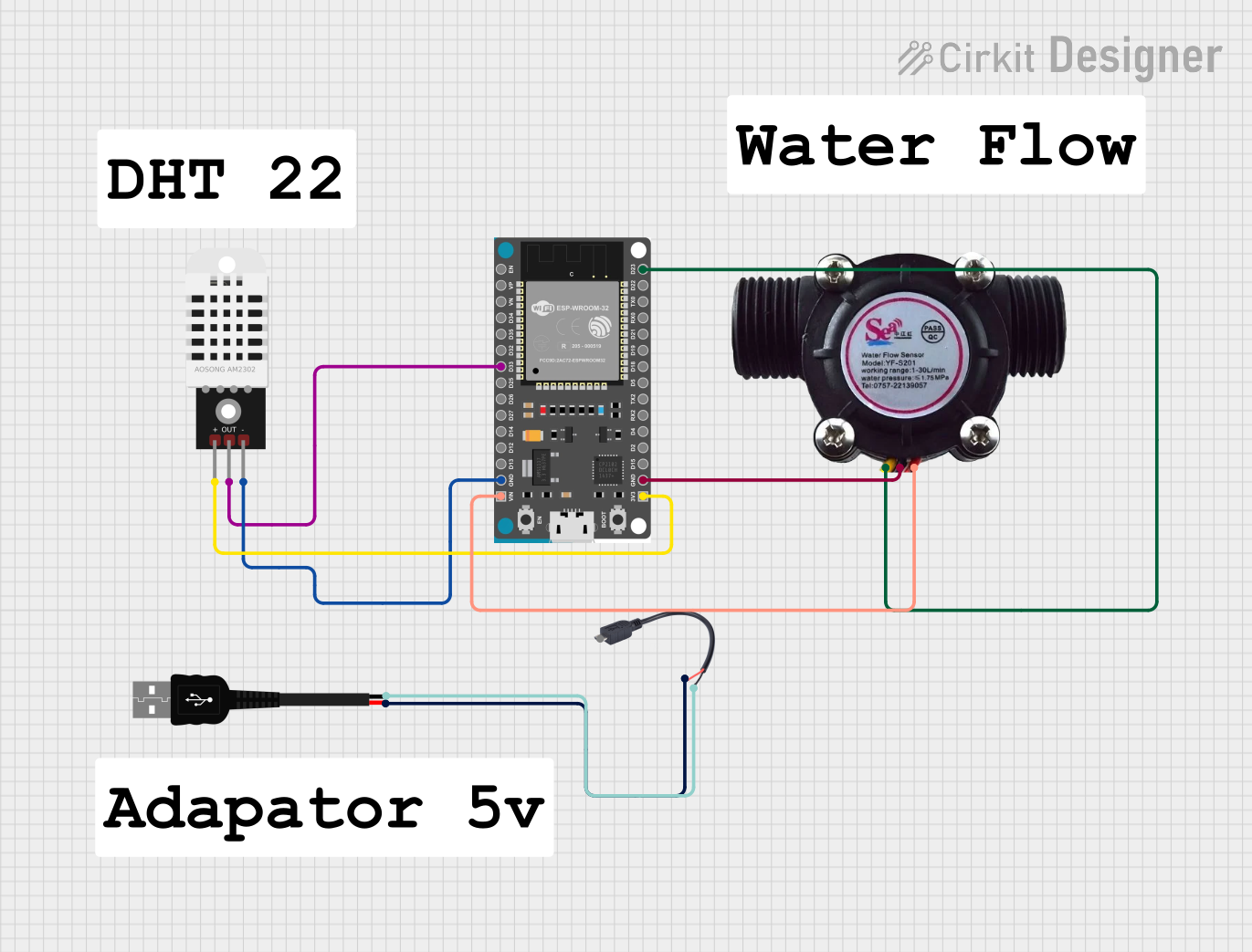
 Open Project in Cirkit Designer
Open Project in Cirkit Designer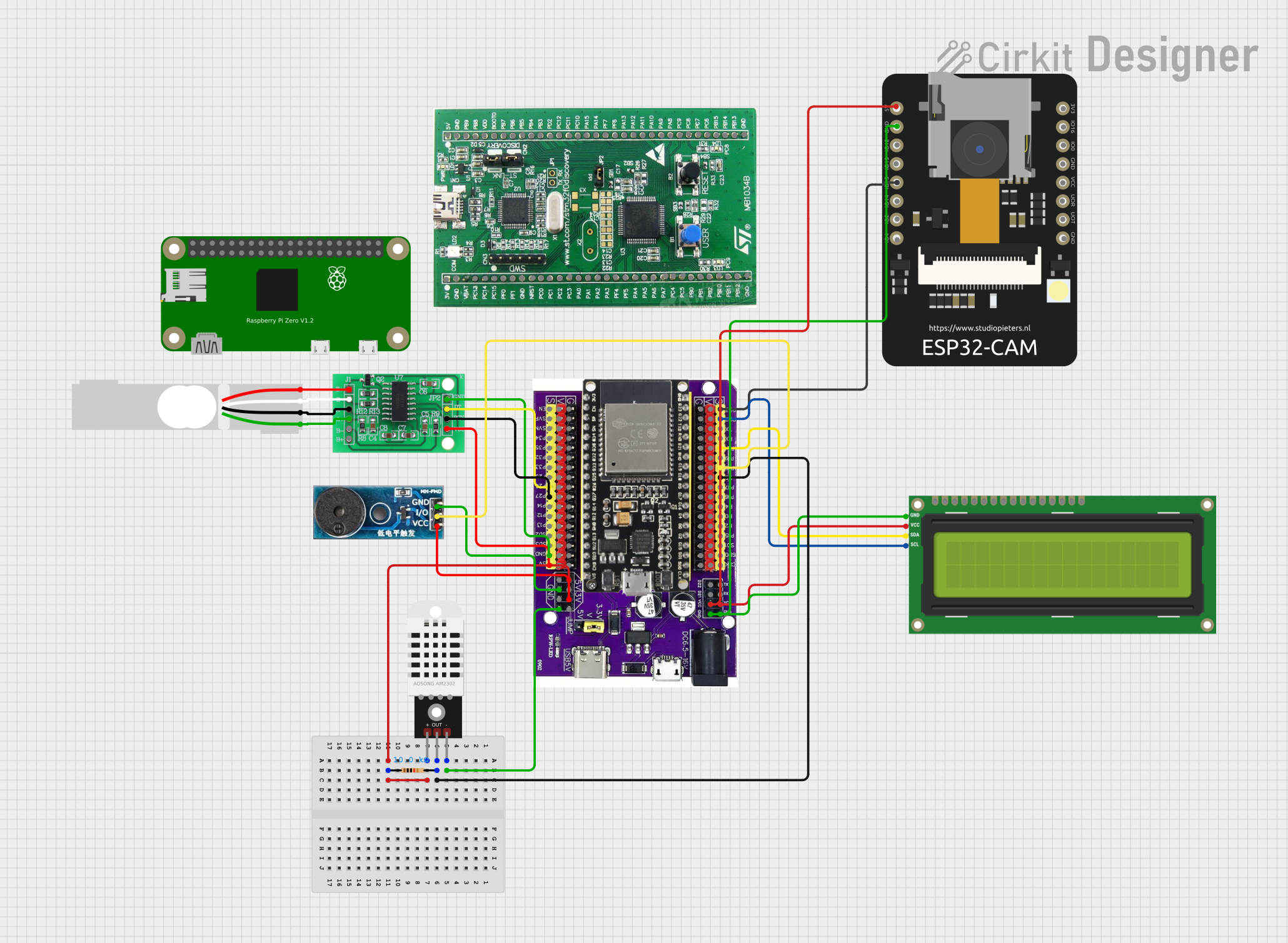
 Open Project in Cirkit Designer
Open Project in Cirkit DesignerExplore Projects Built with ESP32

 Open Project in Cirkit Designer
Open Project in Cirkit Designer
 Open Project in Cirkit Designer
Open Project in Cirkit Designer
 Open Project in Cirkit Designer
Open Project in Cirkit Designer
 Open Project in Cirkit Designer
Open Project in Cirkit DesignerCommon Applications and Use Cases
- IoT devices (e.g., smart home systems, sensors, and actuators)
- Wearable technology
- Wireless communication hubs
- Robotics and automation
- Data logging and remote monitoring
- Prototyping and educational projects
Technical Specifications
The ESP32 is packed with features that make it a powerful and flexible component for various applications. Below are its key technical specifications:
General Specifications
- Processor: Dual-core Xtensa® 32-bit LX6 microprocessor
- Clock Speed: Up to 240 MHz
- RAM: 520 KB SRAM
- Flash Memory: Typically 4 MB (varies by module)
- Wi-Fi: 802.11 b/g/n (2.4 GHz)
- Bluetooth: v4.2 BR/EDR and BLE
- Operating Voltage: 3.0V to 3.6V
- GPIO Pins: 34 (multipurpose)
- ADC Channels: 18 (12-bit resolution)
- DAC Channels: 2 (8-bit resolution)
- PWM Channels: 16
- Communication Interfaces: UART, SPI, I2C, I2S, CAN, Ethernet MAC
- Power Consumption: Ultra-low power modes available
Pin Configuration and Descriptions
The ESP32 has a variety of pins for different functionalities. Below is a table summarizing the key pins and their descriptions:
| Pin Name | Type | Description |
|---|---|---|
| GPIO0 | Input/Output | General-purpose I/O, boot mode selection during startup. |
| GPIO2 | Input/Output | General-purpose I/O, often used for onboard LED. |
| GPIO12 | Input/Output | General-purpose I/O, can be used for ADC or other functions. |
| GPIO13 | Input/Output | General-purpose I/O, supports PWM and ADC. |
| GPIO14 | Input/Output | General-purpose I/O, supports PWM and ADC. |
| GPIO15 | Input/Output | General-purpose I/O, supports PWM and ADC. |
| EN | Input | Chip enable pin. Pull high to enable the chip. |
| 3V3 | Power | 3.3V power supply input/output. |
| GND | Power | Ground connection. |
| TX0 (GPIO1) | Output | UART0 transmit pin. |
| RX0 (GPIO3) | Input | UART0 receive pin. |
| ADC1_CH0 | Analog Input | ADC channel 0, used for analog-to-digital conversion. |
| DAC1 | Analog Output | Digital-to-analog converter channel 1. |
Note: The ESP32 has many GPIO pins that are multiplexed with other functions. Refer to the official datasheet for a complete pinout and configuration details.
Usage Instructions
The ESP32 is easy to integrate into a variety of projects. Below are the steps and best practices for using the ESP32 in a circuit:
Basic Circuit Setup
- Power Supply: Connect the 3.3V pin to a stable 3.3V power source. Ensure the current supply is sufficient (at least 500 mA).
- Ground Connection: Connect the GND pin to the ground of your circuit.
- Programming Interface: Use a USB-to-serial adapter or a development board with a built-in USB interface to program the ESP32.
- Boot Mode: To enter bootloader mode for programming, hold the BOOT button (if available) while resetting the device.
Example: Connecting to an Arduino UNO
The ESP32 can communicate with an Arduino UNO via UART or I2C. Below is an example of how to use the ESP32 with an Arduino UNO to blink an LED:
Arduino Code Example
#include <WiFi.h> // Include the Wi-Fi library for ESP32
// Define Wi-Fi credentials
const char* ssid = "Your_SSID"; // Replace with your Wi-Fi SSID
const char* password = "Your_Password"; // Replace with your Wi-Fi password
void setup() {
Serial.begin(115200); // Initialize serial communication
WiFi.begin(ssid, password); // Connect to Wi-Fi
// Wait for connection
while (WiFi.status() != WL_CONNECTED) {
delay(1000);
Serial.println("Connecting to Wi-Fi...");
}
Serial.println("Connected to Wi-Fi!");
}
void loop() {
// Blink an LED connected to GPIO2
pinMode(2, OUTPUT); // Set GPIO2 as output
digitalWrite(2, HIGH); // Turn LED on
delay(1000); // Wait 1 second
digitalWrite(2, LOW); // Turn LED off
delay(1000); // Wait 1 second
}
Important Considerations
- Voltage Levels: The ESP32 operates at 3.3V logic levels. Avoid connecting it directly to 5V logic devices without level shifters.
- Power Supply: Ensure a stable power supply to avoid unexpected resets or malfunctions.
- GPIO Usage: Some GPIO pins have specific functions during boot (e.g., GPIO0, GPIO2). Avoid using these pins for critical tasks unless necessary.
Troubleshooting and FAQs
Common Issues
ESP32 Not Connecting to Wi-Fi
- Cause: Incorrect SSID or password.
- Solution: Double-check the Wi-Fi credentials in your code.
Device Keeps Resetting
- Cause: Insufficient power supply or unstable voltage.
- Solution: Use a reliable 3.3V power source with adequate current capacity.
Cannot Upload Code
- Cause: Incorrect boot mode or serial port not detected.
- Solution: Hold the BOOT button while resetting the device to enter bootloader mode. Ensure the correct COM port is selected in your IDE.
GPIO Pin Not Working
- Cause: Pin conflict or incorrect configuration.
- Solution: Check the pin's alternate functions and ensure it is not being used for another purpose.
FAQs
Q: Can the ESP32 be powered with 5V?
A: No, the ESP32 operates at 3.3V. Use a voltage regulator if your power source is 5V.Q: What is the maximum range of the ESP32's Wi-Fi?
A: The range depends on the environment but is typically around 50 meters indoors and 200 meters outdoors.Q: Can I use the ESP32 with MicroPython?
A: Yes, the ESP32 supports MicroPython. You can flash the MicroPython firmware to the device and program it using Python.Q: How do I update the ESP32 firmware?
A: Use the ESP-IDF or a compatible flashing tool to upload the latest firmware.
By following this documentation, you can effectively use the ESP32 in your projects and troubleshoot common issues. For more advanced features, refer to the official ESP32 datasheet and programming guides.